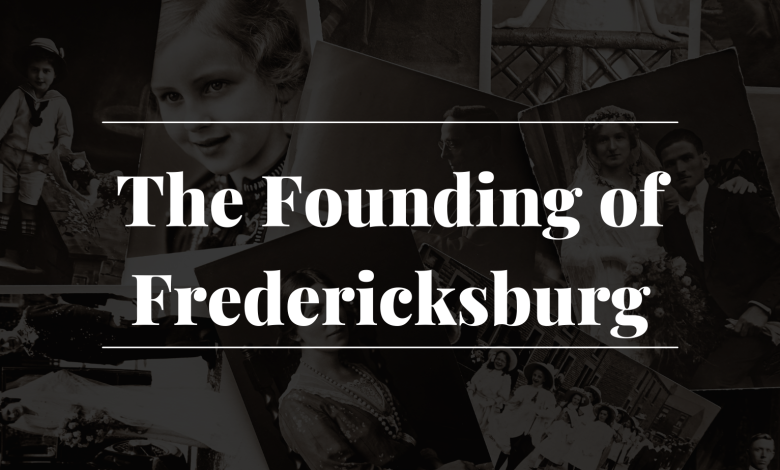The Founding of Fredericksburg

Written by Kathy Bicksler- Stouffer
The Bicksler family has been researching the history of Fredericksburg in hopes of preserving our community for the generations to come. This is an excerpt from their book “Frederickburd, Lebanon County, Pennsylvania”.
Frederick Stump: The Man Behind the Village
Fredericksburg, a quaint village nestled in Pennsylvania, has a rich history that dates back to its founding in 1761. Frederick Stump, the visionary behind this settlement, played a pivotal role in shaping its early years. In this historical account, we delve into the fascinating story of Frederick Stump and the origins of Fredericksburg.
Early Days of Fredericksburg
Frederick Stump, the founder of Fredericksburg, embarked on this endeavor in 1761. His father, Christopher Stump, had acquired land from John Reynolds, who held a patent for 193 acres of the area. This land formed the core of what would become Fredericksburg. Additionally, John Snavely sold lots that make up the western section of the village.
One intriguing historical connection is the sale of lot #144 to Peter Eisenhauer, an ancestor of President Dwight D. Eisenhower. Peter’s father, Nicholas Eisenhauer, received a land warrant under the name “Nicholas Ironcutter,” a loose English translation of Eisenhauer. Remarkably, the warrant was issued on January 20, 1753, precisely 200 years before President Eisenhower’s inauguration in 1953.
Early Settlers and Naming Quirks
Fredericksburg had its share of early settlers, including the Groves, Oberholtzers, Grohs, Rudys, Millers, Martins, Licks, Deshers, Feesers, Wagners, Weabers, Grumbines, Hoffas, Buchmoyers, Kreps, Schnotterlys, Strohs, and Fabers. These families contributed to the village’s growth and character in its formative years.
Notably, the town underwent several name changes, being referred to as Newtown and Reamstown on various documents and maps. However, it was most often known as Stumpstown. When the post office was established in 1826, the town was named Stumptown without the “s,” following the Pennsylvania Dutch tradition (Schtumpestaedel) to honor its founder, Frederick Stump. Later, it was briefly renamed Fredericksburgh in 1842, but this caused confusion with Fredericksburg, Virginia, leading to mail delivery mishaps. Ultimately, the name was simplified to Fredericksburg, as chosen by Frederick Stump himself, in 1893.
The Enigmatic Life of Frederick Stump
A Complex Figure in History
Frederick Stump’s life was nothing short of extraordinary, marked by both notoriety and heroism, depending on the historical perspective. Born in Heidelberg Township, present-day Schaefferstown area, in what was then Lancaster County, he hailed from a family with a reputation for frontier strength.
Merchant, Tavern Keeper, and Landowner
Prior to venturing into the establishment of Fredericksburg, Stump operated as a merchant in the square of Schaefferstown. His trade included a range of goods, from powder and peddle-ware to lead and shoe leather, as advertised in the November 1759 Pennsylvanische Berichte. By 1762, he was listed as a tavern keeper. In 1763, Stump sold most of the lots to John Snavely, possibly the brother of Stump’s wife, Anna Snavely.
A Controversial Figure
Frederick Stump’s life took a controversial turn in 1766 when his property in Schaefferstown was sold by the Sheriff due to financial difficulties. Shortly after this, Stump claimed to have paid John Penn £100 for the land he was occupying near Sunbury, near Fort Augusta. However, the land was owned by the Six Nations, and English law prohibited land purchase or settlement without the King’s permission. John Penn, grandson of William Penn and colonial governor of Pennsylvania, publicly stated in the Pennsylvania Gazette that Stump was essentially a squatter without the authority to settle there.
Stump’s cabin and crops were subsequently burned by Colonel Francis, the commander of Fort Augusta, a common response to squatters in those days.
The Tragic Incident of 1768
In 1768, a tragic incident unfolded when Stump and his servant Hans Eisenhauer, also known as John Ironcutter, killed four Indian men and two Indian women in his house in Cumberland County. The following day, he killed another Indian woman, two girls, and an infant in their cabin.
Some accounts suggest this may have been in revenge for the killing of Stump’s wife and family several months earlier when he was still in the Fredericksburg area. However, there is no concrete evidence to support this version. Stump himself claimed that he killed the Indians after several had become drunk in his tavern, and he felt threatened. John Penn speculated that Stump got the Indians drunk because he wouldn’t have been able to kill so many men in a fair fight.
Stump was captured and placed in the Carlisle jail. Concerned that locals might sympathize with him due to losses suffered during Indian raids, Penn and the authorities planned to move the trial to Philadelphia. Stump managed to escape with the help of approximately 80 supporters.
A Wanted Man
John Penn issued a proclamation for Stump’s re-arrest with a reward of two hundred pounds. It was feared that Stump’s massacre of the Indians would lead to another war, particularly since he had scalped several of them, which was considered a declaration of war. This turn of events was ironic, as Frederick Stump’s father and Conrad Weiser had previously negotiated peace with the Six Nations. John Penn, in a letter to Thomas Penn, the colony’s proprietor and John’s uncle, referred to Stump as “one of the greatest villains in the country.”
Varied Accounts and Uncertainties
What happened to Frederick Stump next is a matter of varying accounts and uncertainties, depending on who is telling the story. Julia Guice, a descendant of Frederick Stump, presents one version of his story in her book, “Frederick Stump – The Rest of the Story.” According to her account, after the tragic events in Pennsylvania, Frederick Stump headed south to Georgia.
While serving in the Revolutionary War, he was taken prisoner and sent to St. Augustine, Florida. Through bribery, Stump managed to escape from the prison. However, upon his return to Georgia, he discovered that his mills had been burned, and his property had been confiscated.
Frederick Stump, along with his wife, Anna S. Stump, then traveled to French Lick, Tennessee. He signed the Cumberland Compact, making him one of the original settlers of Nashville. He went on to lead a successful life as a tavern owner, a respected veteran of the Revolutionary War and War of 1812, and even held the position of a local justice. Remarkably, he lived to the ripe old age of 97 and left behind a substantial estate.
A Controversial Legacy
The historical marker at the Frederick Stump Tavern in Nashville, erected by the Historical Commission of Metropolitan Nashville and Davidson County, supports Julia Guice’s version of the story. It provides details about Frederick Stump’s life, including his birth in Lancaster County, his marriages, and his founding of Stumpstown, Pennsylvania.
However, it’s important to note that this version of Frederick Stump’s life story is not the only one. Some historians claim that Frederick Stump, a farmer, died in Lancaster County in 1802, while others suggest he disappeared without a trace.
Ezra Grumbine, M.D., who presented several histories of Fredericksburg and Frederick Stump to the Lebanon County Historical Society, repeated an unproven and unlikely story of Frederick Stump’s wife and children being killed by Indians. This story lacks concrete evidence and conflicts with historical accounts.
One historian who extensively studied Frederick Stump is Linda Ries, editor of “Pennsylvania History: A Journal of Mid-Atlantic Studies.” She has emphasized that there is no definitive evidence proving that the Frederick Stump who founded Fredericksburg is the same as the squatter in Snyder County, the Indian Killer, or the tavern owner in Nashville, Tennessee.
Connecting the Dots
The facts that point to the founder of Fredericksburg, the squatter, and the tavern owner being one and the same are as follows:
- It appears that the wife who traveled with Frederick Stump to Nashville was Anna (Ann) Snavely, the same wife as in Fredericksburg. The Stump Family Bible states, “Ann Snavely, wife of F. Stump departed this life.” The Bible also mentions a son, Christopher Stump, which would be consistent with Frederick Stump, the Fredericksburg founder, whose father was Christopher.
- The historical markers in Nashville support the same story.
- John Penn’s proclamation states that Frederick Stump is from Heidelberg Twp. (same as the Fredericksburg founder).
- The Revolutionary War fighter was from Heidelberg Twp.
- Stump’s “servant,” Hans Eisenhauer (John Ironcutter), is possibly a relative of the Fredericksburg Eisenhauers.
- Penn states in a letter that it was thought Stump visited his father in Tulpehocken (Christopher was living in Marion Twp., Berks County, which is Tulpehocken).
- Julia Guice, in “Frederick Stump: The Rest of the Story,” also states that Frederick Stump’s signature on deeds matches the signature of the Frederick Stump who signed the Cumberland Compact. There appears to be a resemblance between the signatures, but that is a matter for an expert to decide.
- Stump identified himself as a tavern keeper in Fredericksburg in 1762, had a tavern in Cumberland County, and was a tavern keeper in Nashville.
However, there are also facts that point to the Frederick Stumps above not being the same individual:
- The birthdates do not match (although this is not uncommon for this time period). When Penn issued his proclamation for capturing Stump, Stump was described as “about 33 years old (this would have made his birth year circa 1735, not the 1723 on the historical marker), 5’8″, black hair, thin-visaged with small black eyes with a down-cast look.”
- As Linda Ries points out in her article, “The Rage of Opposing Government: The Stump Affair of 1768,” Frederick Stump is a common name.
Frederick Stump has been a challenging figure for researchers everywhere. At the very least, he can be credited with founding your town. Whether he is indeed the same person as the squatter, the Indian murderer, the war hero, and the tavern owner is a historical puzzle that may only be solved through DNA analysis.
Legacy and Historical Controversy
Frederick Stump’s legacy is a complex one, marked by controversy and varying historical accounts. While some regard him as a hero, others view him with disdain. His life story, from founding Fredericksburg to his involvement in the events of his time, has left an indelible mark on the history of your town.
Despite the challenges in piecing together his life’s narrative, Frederick Stump’s contributions to the community cannot be denied. He played a significant role in shaping the early history of the region, and his founding of Fredericksburg stands as a testament to his vision and determination.
As historians continue to investigate the multiple facets of Frederick Stump’s life, the debate over whether he was the same individual involved in various controversial incidents remains. It is a topic that invites further exploration and scrutiny, shedding light on the complexities of historical research and the need for a comprehensive understanding of the past.
Conclusion
In conclusion, Frederick Stump’s story is a captivating and multifaceted one, reflecting the intricacies of early American history. His role as the founder of Fredericksburg, coupled with the controversies surrounding his life, make him a figure worth studying and discussing. As your town carries forward its rich heritage, the legacy of Frederick Stump continues to be an integral part of its historical tapestry.


